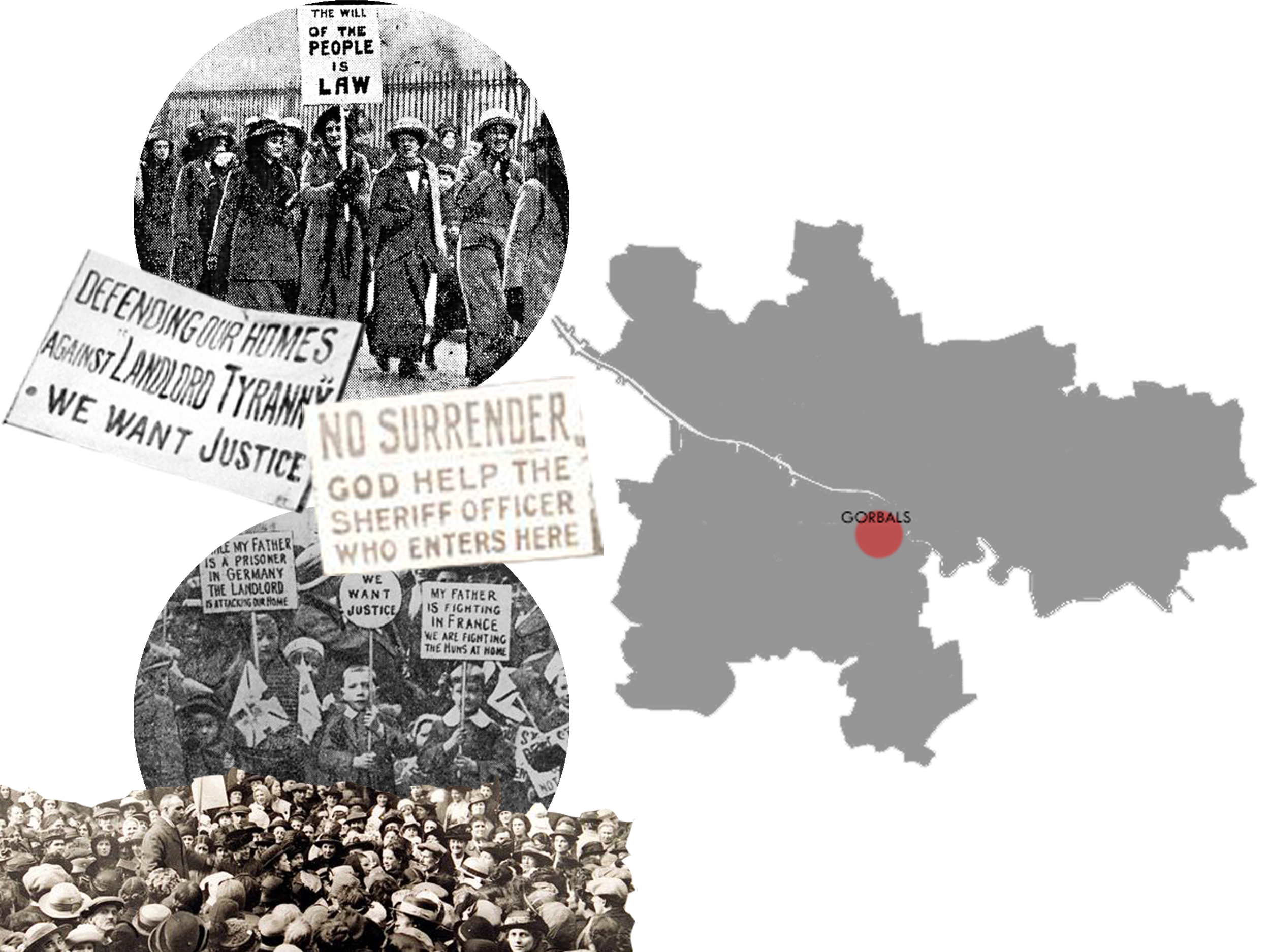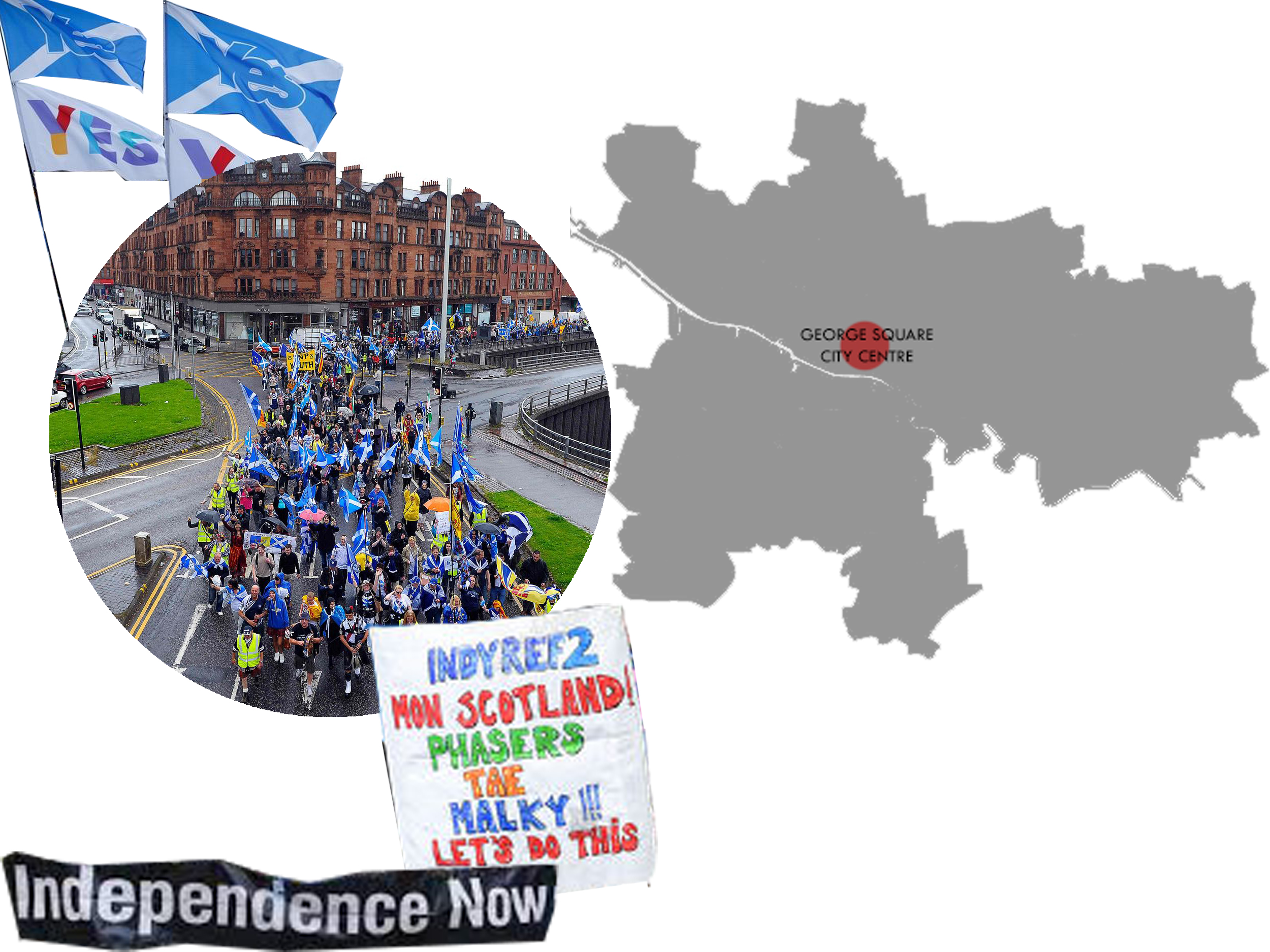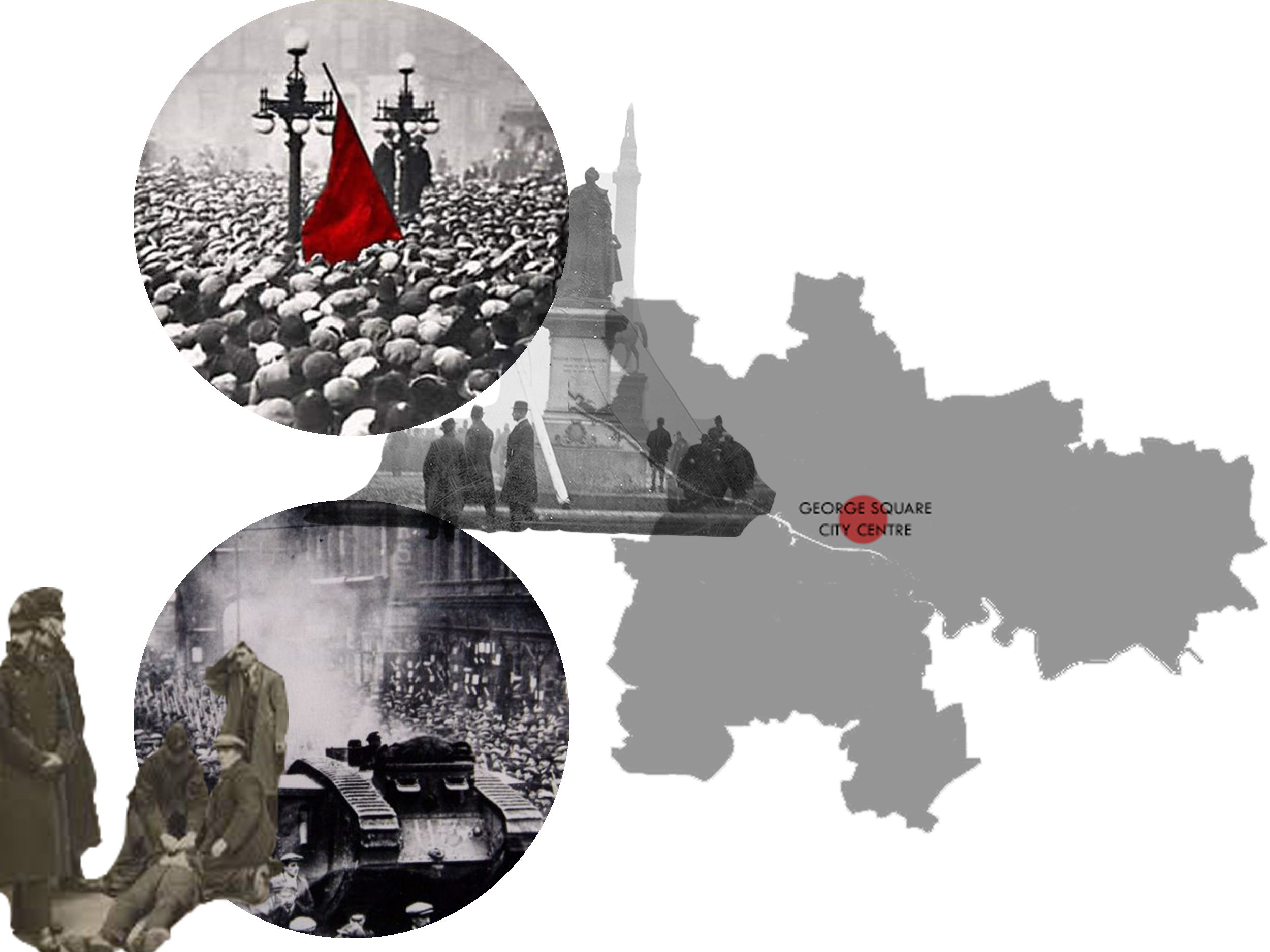First World War has caused housing shortage all over Europe; in February 1915 landlords in Glasgow have informed their tenants that all the rents will be increased by 25% – a hard blow to the domestic budget of many families, which mostly compromised of women and children, as all able men were at war. During the 1910s and before, such thing as rent control or tenants’ protection did not exist and landlords could do as they pleased.
The main organisers of the strike were Glasgow Labour Party and Housewives Housing Association, based in Govan – a working-class district mostly affected by the rise in rent. The strike started in September 1915 with more than 25,000 families refusing to pay rent, to be evicted and not letting the potential new tenants to occupy the vacant flats.On 17th November, eighteen strikers were taken to court by landlords; Housewives Housing Association have organised a mass manifestation by the sheriff’s court; landlords case was surrendered after two hours protest. The same year first-ever nationwide Rent Restriction Act, strongly influenced by Glasgow Rent Strike, came into life. From 27th to 31st January, 1919, a workers’ strike happened, known as Battle of George Square or Bloody Friday. Protesters were manifesting against long working hours – 40 hours per week instead of 54 in heavy industry such as shipbuilding, but it was believed to have a more politicised aim. A proletariat revolution has recently happened in Russia, and monarchy has been overthrown in Germany; cabinet in London believed the unrest in Glasgow could led to similar results, especially as it was lead by left-leaning Clyde Workers’ Committee (CWC).
The war cabinet planned to sent troops across from Scotland and England as well as six tanks to aid the municipal forces with tackling the strike. What has followed is a series of events – first policemen charged at the crowd, then the Sheriff of Lanarkshire has declared the gathering unlawful, which lead to further fights between protesters and the police, spreading as far as to Glasgow Green. Troops and tanks were sent to Glasgow and stationed there until 17th February to end the “bolshevist uprising”, as the strike was allegedly called by the Scottish Robert Munro.The protest has started on 15th October 2011, as a part of the world-wide Occupy movement, caused directly by the late-2000s financial crisis and protesting economic inequality, corporate influence over governments etc. Protesters have set up a camp in George Square, opposite the City Chambers; Glasgow City Council has declared the camp illegal and issued an “eviction notice with immediate effect” on 15th October; on 3rd November protesters camp has moved to the Kelvingrove Park, where Glasgow City Council has set up a fenced area with amenities, lighting and fresh water.
A cyclical event in support of Scottish Independence, organised by All Under One Banner, established after 2014 Scottish Independence Referendum. The marches happen in all major Scottish cities, with first major one being held in Glasgow on 30th July 2016 after the Brexit Referendum; following one happened on 3rd June 2017 and again 5th May 2018; the largest protest up to date has taken place in Glasgow on 4th May 2019, attracting up to 90,000 protestors.
Key Themes: Community, History, Policy




